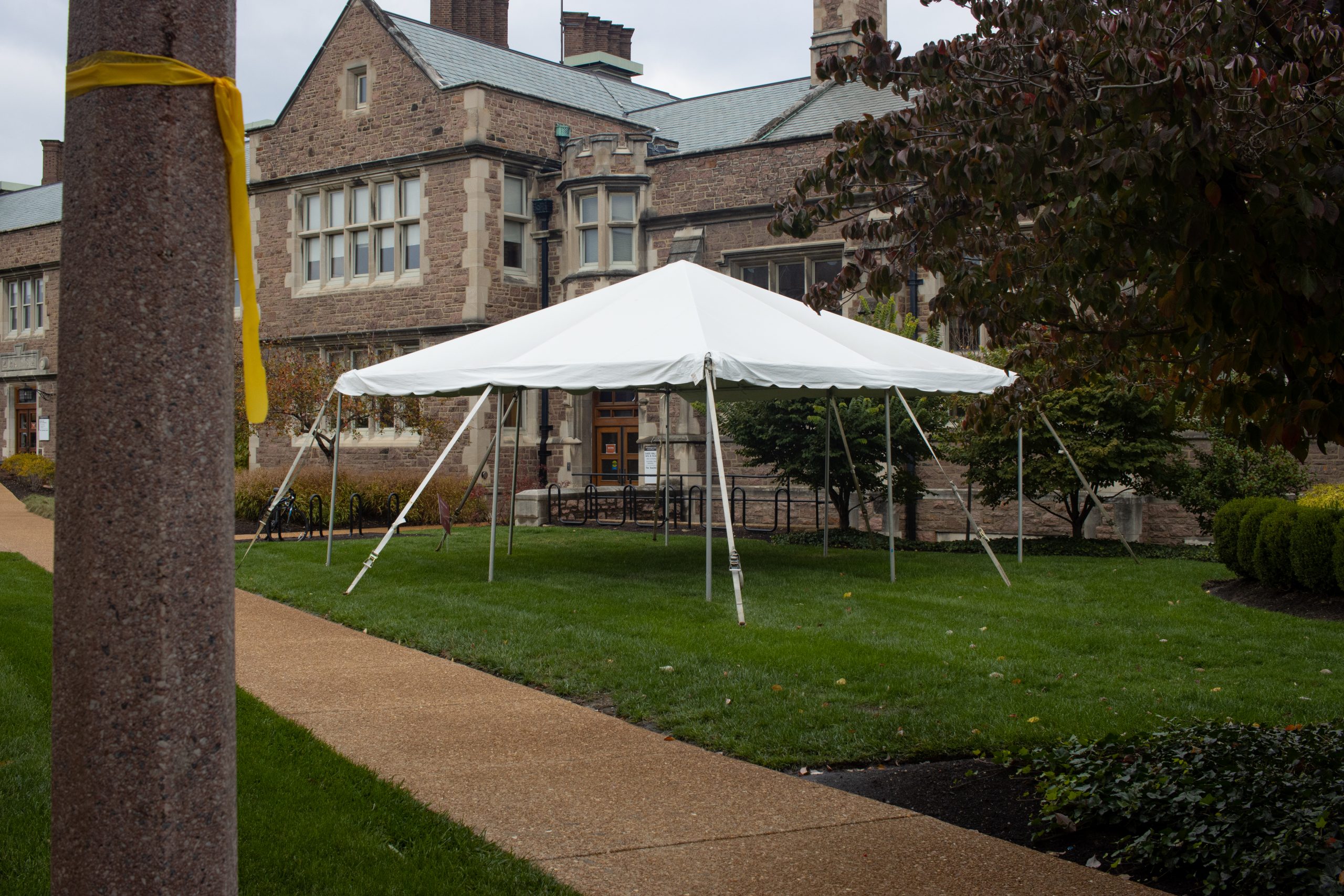Medical | News
University COVID alert level increases to orange as St. Louis sees an uptick in cases; campus infection rate remains low
The Danforth campus COVID-19 dashboard alert level returned to orange, or high alert this week. The high alert indicates that few on-campus activities will occur, and students and faculty should proceed with a high degree of caution.
The change came after two weeks of rising COVID-19 cases and hospitalizations in the St. Louis area, suggesting a new wave of regional infection, and is not a reflection of on-campus conditions, according to Washington University administrators.
 Curran Neenan | Student Life
Curran Neenan | Student Life Orange is the University’s second-highest alert level, which ranges from green, the lowest level indicating a “new normal,” up to red, indicating very high alert and necessitating stay-at-home orders. The University’s alert level was briefly downshifted to yellow, indicating holding preventative measures but retaining protective measures.
Executive Director of Habif Health and Wellness Center Dr. Cheri LeBlanc stated that this change was not due to student activity.
“The change in alert level is really about a reflection of current conditions on and around campus rather than tied to specific changes in behavior,” she wrote in a statement to Student Life.
Assistant Vice Chancellor for Student Support and Wellness Kirk Dougher also emphasized that the change was mostly due to increases in COVID-19 transmission in the St. Louis region.
“The escalation of cases in the region is one of the facets considered for our level of risk,” Dougher wrote in a statement to Student Life. “With case numbers going up nationally and some locally, it has us being a bit more wary of where things are headed.”
Researchers believe that this new wave of regional infections is not due to cold weather, but rather due to ongoing trends in the pandemic.
“We really believe that this stage of the infection is due to the fact that there are a lot of people not paying attention to the public health measures: masks, social distancing and washing hands,” Dean of the Washington University School of Medicine Dr. David Perlmutter said. “This pandemic has evolved in many ways, in the ways that we feared worst in the beginning, and that is that people wouldn’t take the public health interventions that were needed.”
Dr. Steve Lawrence, an infectious disease specialist, described the impact of the shift in a video on the Danforth Campus COVID-19 Dashboard. “It doesn’t mean a dramatic change in the activities we’re doing, because we’re still seeing very low numbers of recognized cases on campus and no transmission on campus because [of] all of the things that we are doing,” he said. “The mitigation strategies have been working.”
The University risk alert levels are determined by three factors: first, the situation on campus, determined by the numbers of positive tests from faculty and students, as well as data yielded by surveillance testing; second, regional transmission, which is determined by hospitalization rates and positive test rates in the surrounding St. Louis area; and lastly the University’s response capacity, involving its ability to undertake contact tracing and care for sick or exposed students.
In order for the risk alert level to lower again, all factors related to regional transmission would have to change.
“All the indicators of community spread would have to be going down. I don’t think that’s going to happen for the next few weeks,” Perlmutter said. “The way we see these things evolving is after you start to see spikes in infection rate, it takes a few weeks before you start to see it overwhelm the hospital systems.”
Dr. Lawrence noted that students should maintain vigilance and caution in order to limit the impacts of the new wave of infections on campus. “Really pay even closer attention to avoiding gathering together indoors, unmasked, with people you don’t live with. That’s going to be the most important thing to prevent outbreaks on campus,” he said.
On the whole, students on the Danforth campus have been adhering to the University’s standards and effectively limiting on-campus spread. “We are all absolutely amazed at what you students have done to respond. All of us can’t believe how good our Wash. U. students have been,” Perlmutter said. “We’re proud of you guys.”
